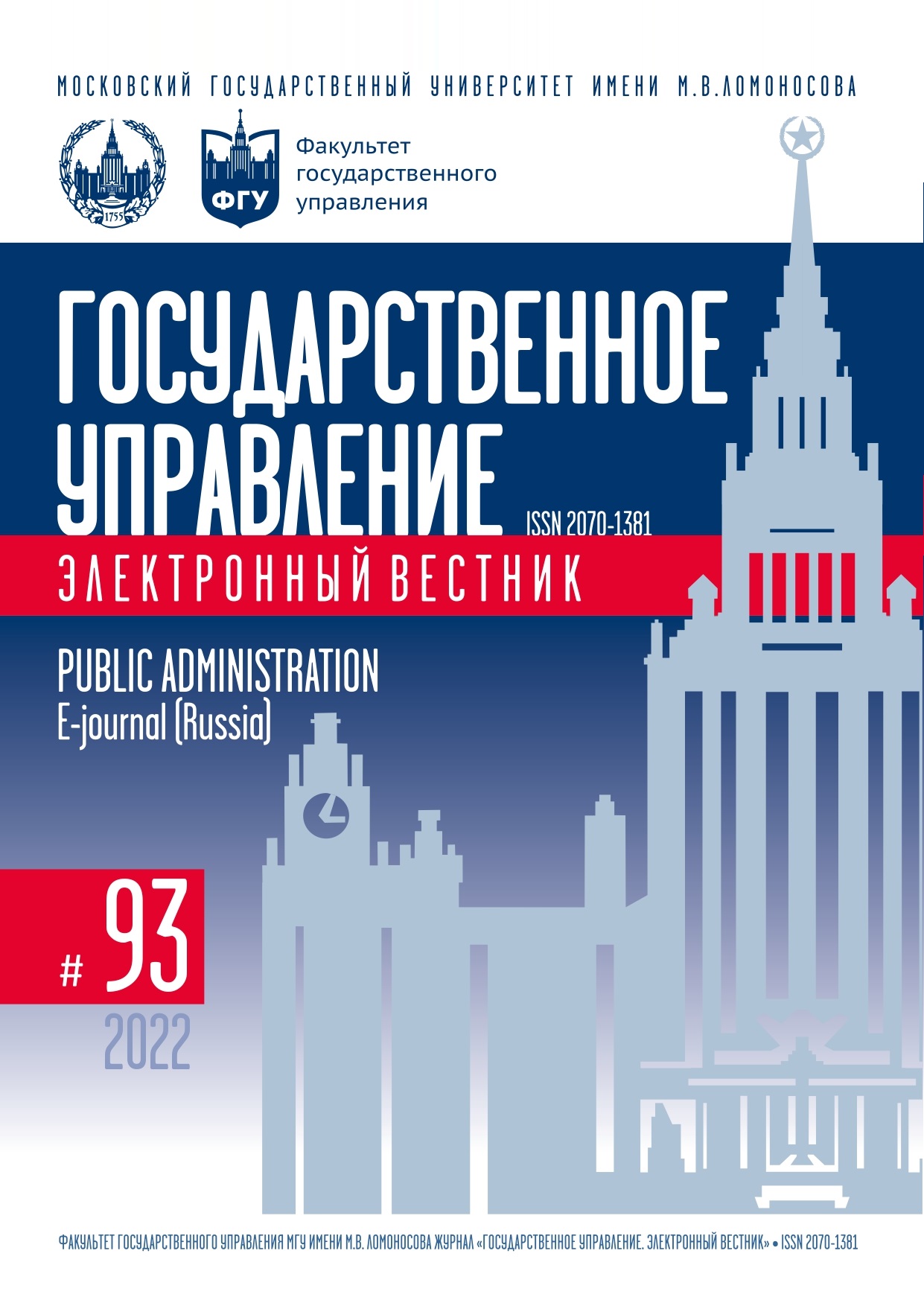Determination of Criteria for Evaluating the Use of Public Services Portal by Population
Keywords:
Portal of public services, information security, dynamics, forecast, trend, structure, difference index, criterion, nonparametric analysisAbstract
In modern conditions of unprecedented sanctions pressure from Western countries, first of all the United States of America, the requirements for the information security of the Russian Federation (RF) are significantly increasing, including the efficiency of the entire set of information systems, precisely the use of the portal of public services. However, at the same time, there is an extreme unevenness in the use of the portal, especially in the context of the subjects of the Russian Federation. It is possible to partially fill this gap and outline concrete ways to reduce the unevenness of the use of the portal of public services by using the results of the presented work. The purpose of the work was to develop criteria for assessing the use of the public services portal by the population and, based on them, to outline directions for improving the efficiency of its use. As an empirical basis for the research, the results of a selective federal statistical observation on the use of information technologies and information and telecommunication networks (ICT) by the population were adopted according to the Decree of the Government of the Russian Federation dated November 26, 2012 No. 2191-R. The object of the study is the portal of public services. Research methods are structural and statistical analyses. As a result, criteria based on the structural analysis and use of the generalized desirability function of E.S. Harrington were formed, allowing us to evaluate the effectiveness of the use of the public services portal. The problems faced by the population when using the portal of public services are identified, and on the basis of nonparametric statistical analysis, the statistical relationship of problems with grouping socio-demographic variables, such as place of residence, gender, age, education, etc. is determined.
References
Бююль А., Цёфель П. SPSS: искусство обработки информации. Анализ статистических данных и восстановление скрытых закономерностей. М.: DiaSoft, 2002.
Иванова М.В. Системы оценки цифровой трансформации государственного управления: сравнительный анализ российской и зарубежной практики // Государственное управление. Электронный вестник. 2020. Выпуск № 79. С. 246–270. DOI: 10.24411/2070-1381-2019-10058
Кошевой О.С. Модель логистической регрессии для прогнозирования использования населением портала государственных услуг // Государственное управление. Электронный вестник. 2021. № 86. С. 42–56. DOI: 10.24412/2070-1381-2021-86-42-56
Кошевой О.С., Фролов С.Г. Анализ сопоставимости структур малого бизнеса региона, как предварительный этап прогнозирования социально-экономического развития территорий // Современная статистика и ее роль в эффективном управлении: проблемы и перспективы: материалы научно-практической интернет-конференции (Орел, 25 ноября–7 декабря 2015 г.). Орел: [б.и.], 2015. С. 122–125.
Наследов А.Д. IBM SPSS Statistics 20 и AMOS: профессиональный статистический анализ данных. СПб.: Питер, 2013.
Перстенёва Н.П. Критерии классификации показателей структурных различий и сдвигов // Фундаментальные исследования. 2012. № 3–2. С. 478–482.
Родионов О.В., Демичев И.В., Залесов О.В., Николаев А.Е. Методика оценки деятельности научно-педагогических работников с использованием функции желательности Харрингтона // Научная мысль. 2019. Т. 8. № 2 (32). С. 23–30.
Строева Г.А., Горелова А.Д. Оценка сдвигов и различий в занятости населения субъектов ДФО // Вестник Тихоокеанского государственного университета. 2018. № 2 (49). С. 63–72.
Coursey D., Norris D.F. Models of E-Government: Are They Correct? An Empirical Assessment // Public Administration Review. 2008. Vol. 68. Is. 3. P. 525–536. DOI: 10.1111/j.1540-6210.2008.00888.x
Frach L., Fehrmann T., Pfannes P. Measuring Digital Government: How to Assess and Compare Digitalisation in Public Sector Organisations // Digital Government Leveraging Innovation to Improve Public Sector Performance and Outcomes for Citizens / ed. by S. Falk, A. Römmele, M. Silverman. Switzerland: Springer International Publishing, 2017. P. 25–38.
Janowski T. Digital Government Evolution: From Transformation to Contextualization // Government Information Quarterly. 2015. Vol. 32. Is. 3. P. 221–232. DOI: 10.1016/j.giq.2015.07.001

